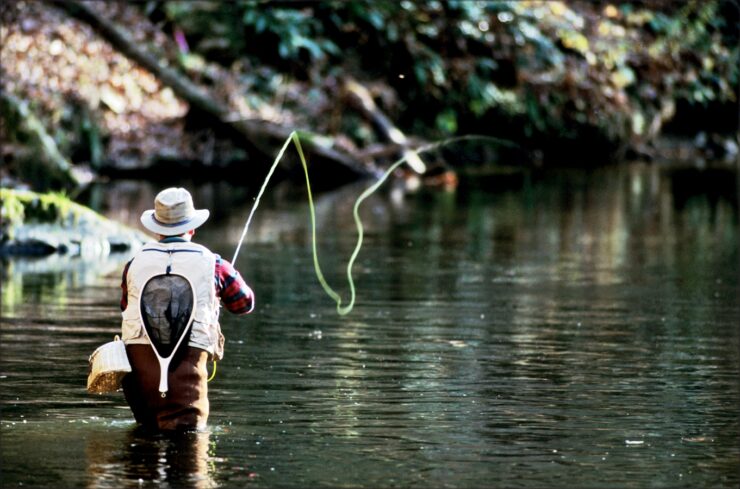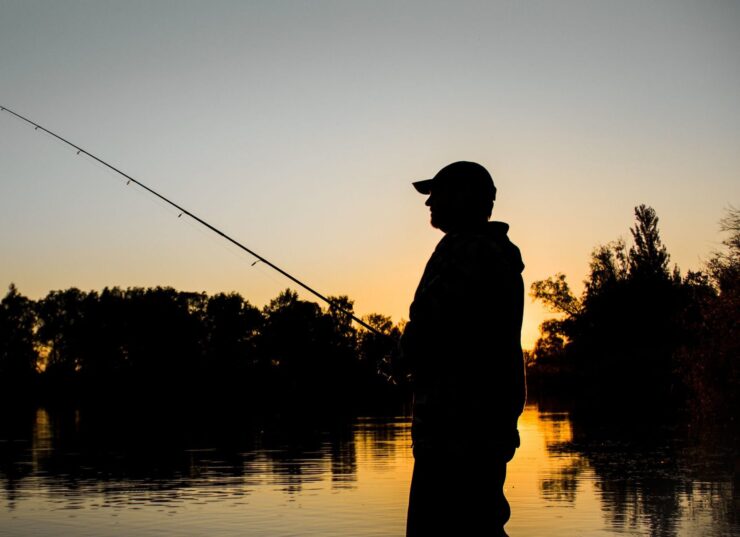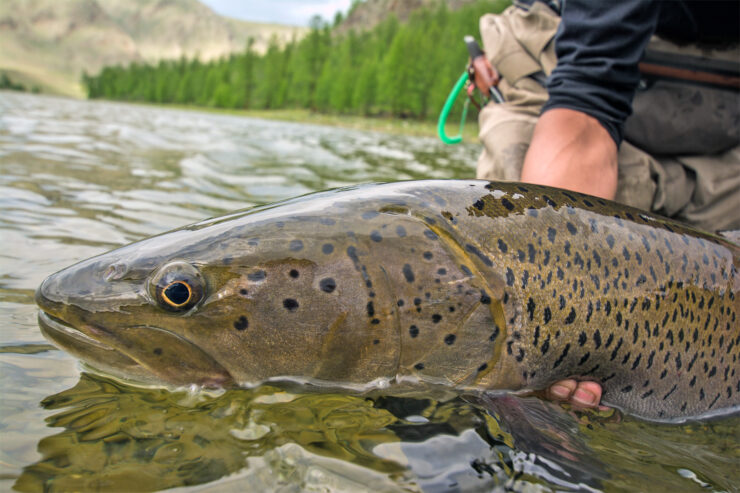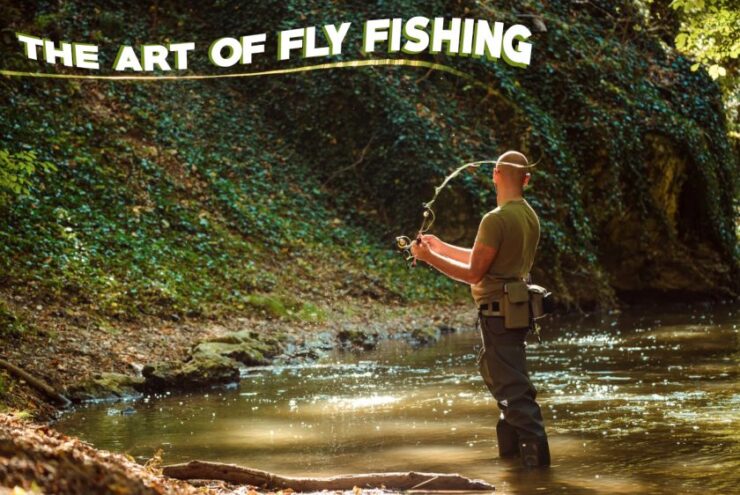Most experienced fly fishermen would agree that there are many different reasons for learning to fly fish and, when asked, each angler is likely to provide a different answer to the question. Thus, it is actually rather difficult to distill the reason why an angler should consider becoming a fly fisherman down to a single, simple, answer. However, the fact is that most novice fly fishermen are attracted to the sport because of its grace and beauty as well as its challenge and, most anglers who convert from conventional fishing methods to fly fishing, never go back.
So, why learn to fly fish? Well, until you have experienced it for yourself, it is hard to describe the feeling of satisfaction an angler gets when he makes the perfect presentation and sees the perfect fish dart forward at light speed to seize his fly, thus ensuing an epic battle that causes him to feel every twitch and tug as the fish fights for to gain its freedom.
Table of Contents
ToggleThe Art Of Fly Fishing: The Complete Guide

When an angler takes up the ancient art of fly fishing, he joins an age-old, worldwide, community of anglers who have also chosen to pursue fish with a fly dating all of the way back to the Roman Empire. Thus, when an angler takes up the art of fly fishing, they not only choose to accept the challenge that fly fishing presents, they become part of a culture that views the act of fishing itself as the main attraction rather than as a means to an end and who views the act of catching and landing a fish as an additional reward.
Enjoying The Great Outdoors Flyfishing
Fly fishing can take an angler to some of the most beautiful places on Earth. In fact, because the art of fly fishing was refined into its present form by medieval English anglers who wanted a means of catching their native Brown Trout in their local chalk streams, fly fishing was originally viewed as a stream angler’s sport. Thus, for those anglers who are willing to pursue their chosen prey in its traditional native habitat, pristine mountain streams can provide a fly fisherman with some of the most spectacular scenery on the face of the planet.
However, the one aspect that seems to draw anglers to the ancient art of fly fishing more than anything else is its grace, its beauty, and its challenge. For instance, many fly fishermen are first attracted to the sport after seeing another angler on stream leisurely wading the currents while making graceful casts to various lies where the fish are likely to be holding. Of course, such grace and beauty can only be achieved when casting a fly because fly fishermen use an entirely different means of presenting their fly to their chosen prey than conventional fishermen do and their equipment is specifically designed to accomplish the task. This, in turn, tends to provide the fly fisherman with a sense of connection to their environment and the prey they are pursuing that many conventional fishermen simply do not experience.
A Good Community To Be Part Of

There is the fact that most fly fishermen are also ardent conservationists who want to see their favorite form of recreation available to future generations and thus, many fly fishermen actively pursue conservation efforts by joining with other like-minded fly fishermen in conservation groups such as Trout Unlimited. Consequently, unlike many conventional fishermen, fly fishermen often enjoy a sense of community, camaraderie, and friendly competition that brings them together to share stories, pictures, and locations via community events while also enabling them to enjoy the company of fellow fly fisherman as well as finding new fly fishing partners.
A Lifelong Learning Experience
Many fishermen are also drawn to the sport by its complexity in addition to its physical challenges. In fact, while learning the art of casting a fly is the first step to becoming a successful fly fisherman, learning to do so can be far more challenging than learning to cast a conventional fishing lure. But, once an angler has mastered the basic art of presenting a fly to a fish, the act of presenting a fly becomes a challenge unto itself because of the many different types of casts that need to be mastered. Then, for those who pursue trout and other game fish species in streams, there is the art of learning how to read the water and the art of learning how to choose the right fly pattern. Then, if you are the type of person who likes to work with your hands, there are the challenges and rewards that come with tying your own flies and/or building your own custom fly rods. Consequently, taking up the ancient art of fly fishing can be a life-long learning experience that can keep an angler both mentally and physically engaged well past retirement age.
You Can Catch A Wide Range Of Species Flyfishing

Last but not least, there is the fact that although fly fishing was originally developed as means of imitating aquatic insects for the purpose of catching trout in mountain streams, the fact is that most fish species will strike a fly just like they will strike a conventional fishing lure. Consequently, both fly fishing equipment and fly patterns have evolved over the years to enable fly fishermen to pursue nearly any fish species in any aquatic environment. Therefore, fly anglers can now pursue freshwater game fish species such as Smallmouth and Largemouth Bass, Carp, and even Pike and Muskie in addition to both inshore and pelagic saltwater game fish species such as Bonefish, Permit, and Marlin. So regardless of where you live, as long as there is a body of water nearby that hosts a viable fish population, there is fly fishing equipment and fly patterns available that will enable you to pursue them.
So, Should YOU Get Into Fly Fishing?
So, why learn to fly fish? Well, any fly fisherman you ask is likely to give you a different answer to that question but, when properly distilled, all answers lead to the simple fact that fly fishing not only enables anglers to pursue a worthy and wary prey in some of the most beautiful places on earth, it also engenders a deep connection to the environment while immersing the angler in a life-long learning experience.
Adelaide Gentry, a seasoned kayaking enthusiast and expert, is the driving force behind KayakPaddling.net. With over a decade of experience navigating the world’s most challenging waterways, Adelaide combines her passion for adventure with a deep knowledge of kayaking to provide insightful and practical guidance for paddlers of all levels.
Related Posts:
- Heavy Duty Fishing: 11 Best Rods And Reels For Big Fish 2024
- 10 Best Saltwater Fishing Boats - Ultimate Angling Adventure
- 9 Best Backpacking Fishing Rods 2024 - Lightweight…
- 12 Best Fishing Lures Ever 2024 - Baits That…
- 10 Best Closed Face Reels 2024 - Game-Changers…
- 10 Best Fishing Hats in 2024 - Keep Yourself Cool…












